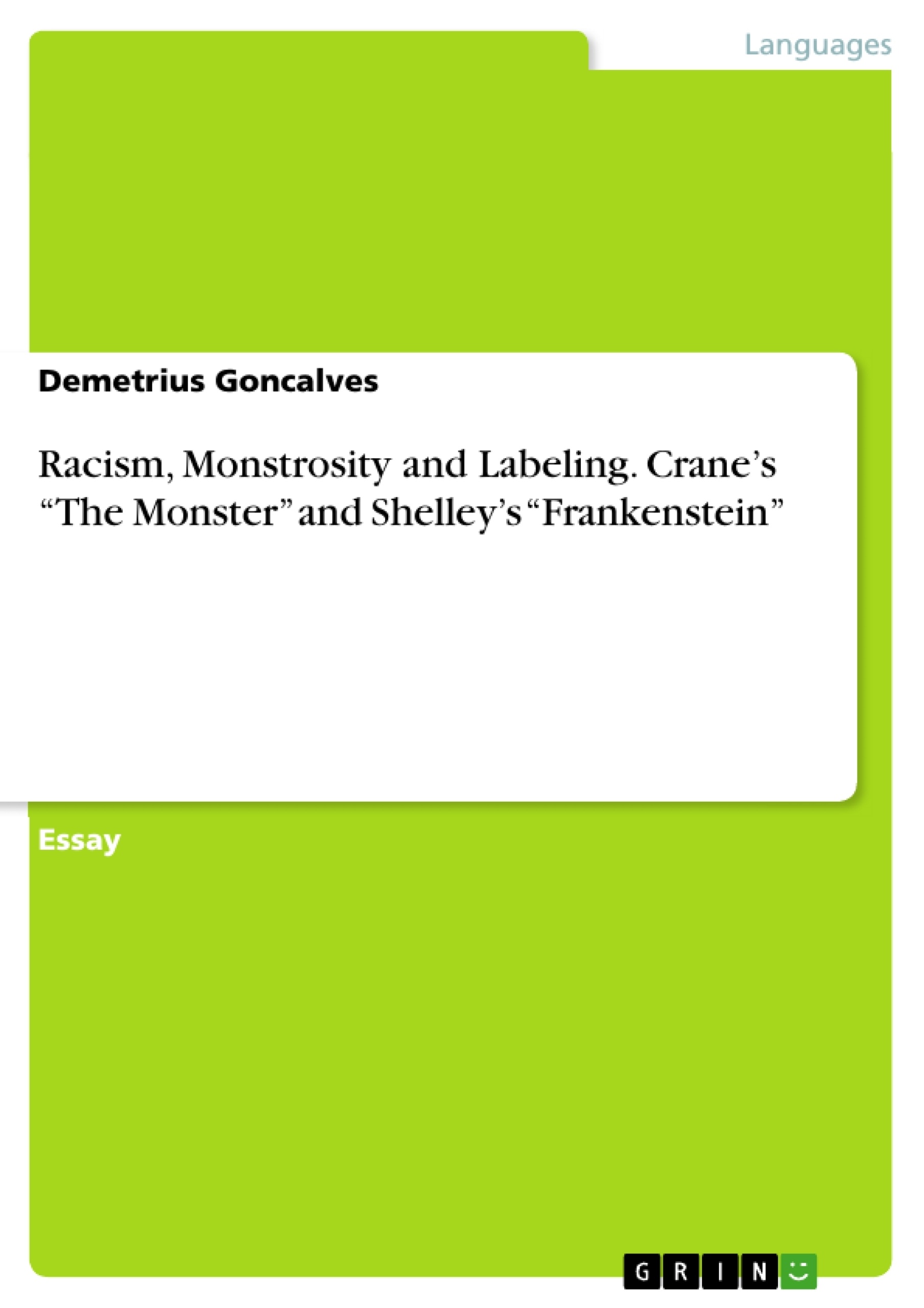This paper will explore Stephen Crane’s 1898 novella “The Monster” in a critical race approach. Inside this theme, there will be discussions based on alienation, class distinctions, race relations, racism, labeling, and especially the mob violence, a movement very popular among the population of the 1890s – a period of intense and horrifying racial violence, where many laws were created to prevent African Americans from integrating in society, the appearance of race labeling and the lynch. Also, it will incorporate passages from Mary Shelley’s “Frankenstein”, trying to compare and contrast the role that alienation plays in both stories. I will also try to discuss criminality on my research, applying Becker’s (1963) labeling theory on all examples provided.
Inhaltsverzeichnis (Table of Contents)
- Racism, Monstrosity and Labeling: Crane's The Monster and Shelley's Frankenstein
Zielsetzung und Themenschwerpunkte (Objectives and Key Themes)
This paper aims to explore Stephen Crane's 1898 novella, The Monster, through a critical race lens. It will analyze themes of alienation, class distinctions, race relations, racism, and labeling, particularly focusing on mob violence prevalent in the 1890s. The paper will also draw parallels with Mary Shelley's Frankenstein to explore the shared theme of alienation.
- Racism and its impact on the lives of African Americans in the late 19th century
- The role of labeling and social exclusion in shaping perceptions of individuals
- The power of mob violence and its connection to racial prejudice
- The theme of alienation as a consequence of social and racial exclusion
- The representation of African Americans in literature and the perpetuation of stereotypes
Zusammenfassung der Kapitel (Chapter Summaries)
The paper begins by examining the historical context of racial violence and segregation in the United States during the late 19th century, highlighting the prevalence of lynching and Jim Crow laws. It then introduces Stephen Crane's The Monster and its protagonist, Henry Johnson, an African American man who becomes a victim of both racism and alienation after a disfiguring accident. The paper analyzes how Henry's disfigurement and his racial identity contribute to his social exclusion. The paper explores the connection between the color black and monstrosity, arguing that society often equates darkness and shadow with evil. It also examines the theme of invisibility, highlighting how Henry is initially unseen by society and later becomes a hero after his presumed death.
Schlüsselwörter (Keywords)
This research delves into the complex intersection of racism, alienation, and labeling. It explores themes of mob violence, lynching, and social exclusion within the context of late 19th-century America. Key concepts include critical race theory, labeling theory, and the representation of African Americans in literature.
- Citar trabajo
- Demetrius Goncalves (Autor), 2015, Racism, Monstrosity and Labeling. Crane’s “The Monster” and Shelley’s “Frankenstein”, Múnich, GRIN Verlag, https://www.grin.com/document/310160
-

-

-

-
¡Carge sus propios textos! Gane dinero y un iPhone X. -

-
¡Carge sus propios textos! Gane dinero y un iPhone X. -

-
¡Carge sus propios textos! Gane dinero y un iPhone X. -

-
¡Carge sus propios textos! Gane dinero y un iPhone X. -

-
¡Carge sus propios textos! Gane dinero y un iPhone X.

